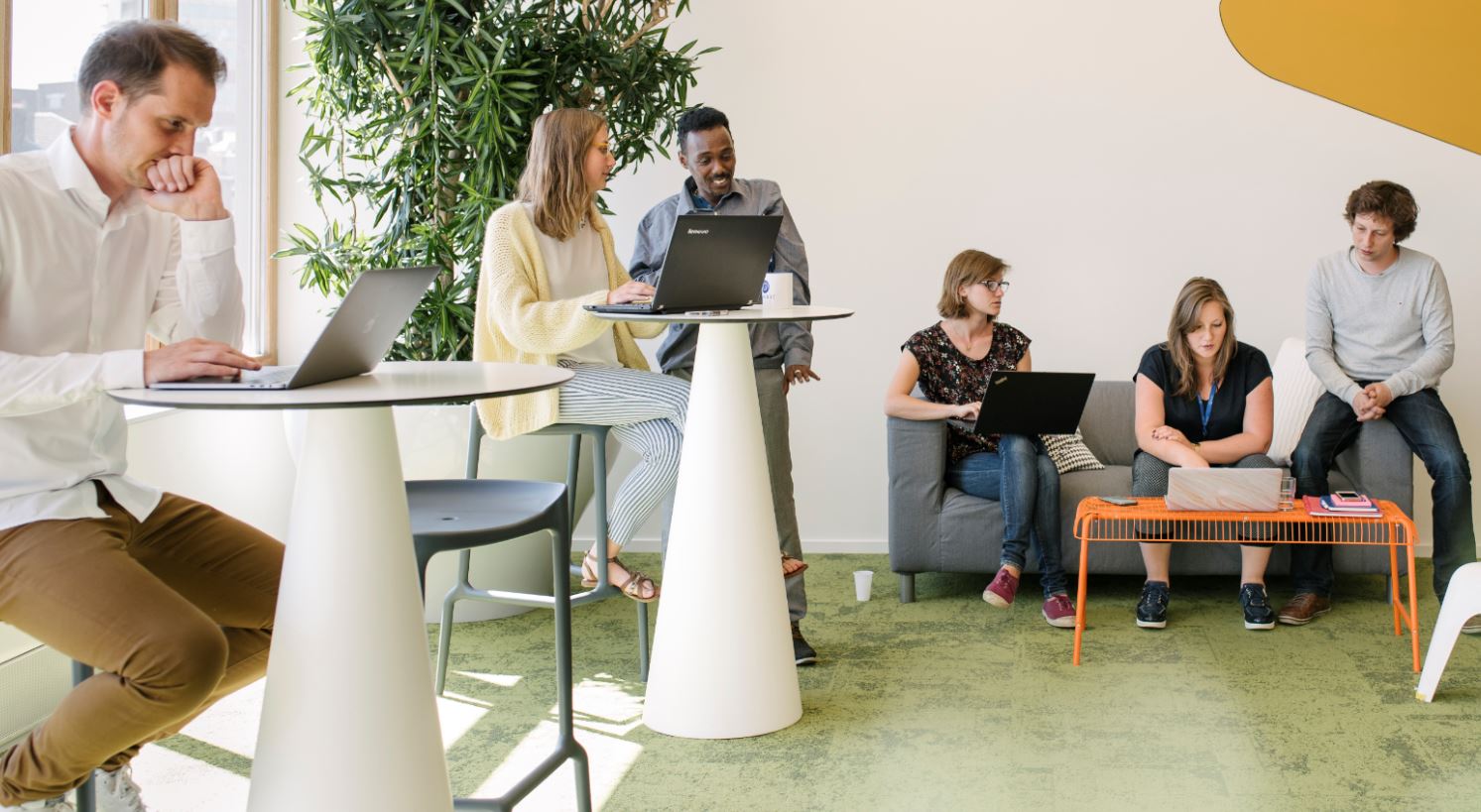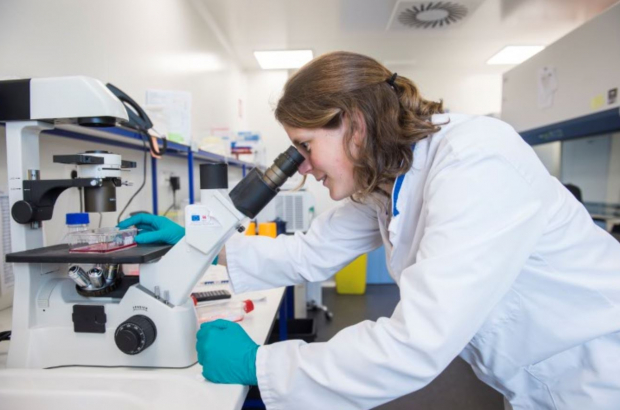- Daily & Weekly newsletters
- Buy & download The Bulletin
- Comment on our articles
University spin-offs create economic value from cutting-edge research
Universities have three basic missions. They educate, they carry out research, and they turn knowledge into economic value. An important part of that third mission is the creation of new companies, known as spin-offs.
Figures collected up to the end of 2016 show that 286 spin-offs had been created by Belgium’s five francophone universities, in Liège, Brussels, Louvain, Namur and Mons. Of those companies, 235 are still active, accounting for more than 3,000 jobs. And those numbers continue to grow.
An academic’s first conversation about commercialising research will probably be with the university’s technology transfer office. Sometimes they take the initiative, but most offices or their partners will also be looking out for ideas with commercial potential. “We have access to the research projects, and we follow them very closely,” says Michel Morant, chief executive of Gesval, a company set up by the Université de Liège to manage commercialisation activities.
If a technology is ready to use, the best commercialisation route might be to license it to a large company with the expertise and resources to make the most of it. But in many cases more work is needed – research, development and business planning – to bring out an idea’s commercial potential. This can be achieved by a spin-off.
Support for creating spin-offs comes through companies such as Gesval or Sopartec, its equivalent at the Université Catholique de Louvain (UCLouvain). Another source is specialist business incubators, such as the Brussels South Biopark Incubator, part of a biotechnology cluster set up near Charleroi by the Université Libre de Bruxelles (ULB).
“ULB represents more than 60% of our pipeline, but we also have projects from other Belgian and European universities, and spin-outs from local companies,” says Florence Bosco, the incubator’s chief executive. “We’re mainly a seed accelerator, so our role is to help researchers turn their R&D results into a business plan that is ready to present to venture capitalists.” This might take from six months up to two years, after which other structures take over. “Once the seed round is completed, we keep supporting the growth of the spin-off via our organisation Biopark Dev, providing market study, real estate and talent acquisition support.”

Companies such as Gesval and Sopartec accompany spin-offs for longer, until they bring a product to the market or attract significant outside investment. “That can be as little as five to seven years, but typically it requires at least ten to fifteen years to deliver the final product,” says Morant.
One of the first priorities is to build a team around the project. “We organise a kind of steering committee with the researchers, our staff and business mentors, in order to define the business model and check the feasibility of turning the technology into a product,” says Philippe Durieux, co-director of UCLouvain’s technology transfer office and chief executive of Sopartec.
The Biopark Incubator also draws on outside advice. “We have a network of experts, people from big pharmaceutical companies or biotech companies, and also people from regulatory agencies,” Bosco explains.
Good knowledge of the market can be important in positioning a spin-off. For example, Liège’s Bone and Cartilage Research Unit had some important results relating to arthritis, but decided to create two spin-offs – Artialis and KiOmed Pharma – rather than one. “They come from the same research, but one is for diagnostics and the other is for therapeutics,” says Morant. “The business models for these sectors are different, and the investors are different, so you shouldn’t mix the two in one company.”
Senior academics remain closely involved once a spin-off company is established, but the chief executive is likely to come from outside. “Generally the researchers do not have the mindset for leading a business,” says Morant. The aim therefore is to recruit an engineer or business developer from industry, someone looking for a fresh challenge. “We have to find a CEO with a lot of experience and expertise, and who fits with the researcher,” Durieux adds.

Even so, there are exceptions. Didier Sertyn, professor of equine anaesthesia and surgery at Liège, was chief scientific officer and is now CEO of his spin-off, Revatis, which is developing a system of regenerative veterinary medicine.
Junior researchers make the transition from university to spin-off more often, a move encouraged by the Walloon Region’s First Spin-off programme. This supports them while they work on a new product or service, and develop complementary business skills. Nearly half of the projects supported result in a spin-off. “It’s rare to have that kind of success rate,” says Morant.
One of these successes is e-biom, spun off from the Université de Namur (see box). And support from the region can also play a broader strategic role, as in the case of A-Mansia, a UCLouvain spin-off developing nutrition supplements to control obesity and diabetes. These are based on a bacterium discovered at Wageningen University in the Netherlands, whose effects were revealed by a team at UCLouvain. “We had the possibility to attract this company to Belgium because we received grants and subsidies, and because the PhD and professor received money to pursue their research through the incubation phase via the First Spin-off programme,” Durieux says.
In addition to public funding, the universities have established investment funds to support their spin-offs. Liège has Spinventure, UCLouvain has the Vives Louvain Technology Fund, and ULB has the Theodorus Fund. The aim is to kick-start the spin-offs, rather than control them.
“Vives Louvain Technology is a minority shareholder, and we try to raise funding with external shareholders who have expertise in the specific area where the spin-off is active,” says Durieux. Over six years, the Vives Louvain Technology Fund has invested €20 million in 17 companies, attracting more than €268 million from blue-chip corporates and large co-investors. “The multiplier effect is huge.”
The Biopark Incubator works closely with Theodorus and Sambrinvest’s Butterfly Fund. “Our acceleration programme goes together with this pre-seed funding, which takes some of the risk out of the project before the seed round takes place,” says Bosco. Its current stars are Epics Therapeutics, a drug discovery company spun off from the work of François Fuks at ULB on epigenetic mechanisms involved in cancer development, and ChromaCure, which is developing drugs that will slow tumour initiation and progression, based on research from Cédric Blanpain’s lab, also at ULB.
All the universities offer incubators and space on their science parks for new enterprises. Even as they become independent, spin-offs are encouraged to maintain an intellectual and physical connection with the university, becoming part of the innovation ecosystem.

For example, UCLouvain’s cancer immunotherapy spin-off, iTeos Therapeutics, has been based on the Brussels South Biopark since 2012. Last year it raised additional investment of €64 million and created a subsidiary in Boston to run clinical trials and develop its US business. “But it will keep R&D activities here, so the team remains, along with the head of drug discovery,” says Bosco. Maintaining this ecosystem helps create even more spin-offs. “More and more, we find the expertise we need within the members of the Biopark.”
Meanwhile, spinning off benefits the university as a whole. “The creation of spin-off companies represents an extraordinary opportunity for UCLouvain to truly fulfil its mission of transferring knowledge to society and to forge new ties between the researchers and entrepreneurs,” says Durieux. And most important of all, it brings prosperity to the region. “University spin-offs may be small companies that take time to generate employment, but when they do, they transform the economy,” says Morant.
A new view on biodiversity
After completing a PhD in ecological science at the University of Namur, Jonathan Marescaux looked for work in the private sector. He picked up a consultancy contract in aquatic ecology, and this made him think there might be a business opportunity in the molecular ecology techniques used in his PhD.
Every organism leaves traces of its DNA behind in the environment. “From a simple sample of water or soil, it’s possible to recover this DNA and quickly and accurately determine the biodiversity present in the ecosystem,” he explains. “Although this method has been used in scientific projects since the end of the 2000s, it had not been commercialised in Belgium.”
With a First Spin-off grant from the Walloon Region, he validated the method as a commercial proposition and tested the market. Further support came from the university, Namur Province and the WBC biotech incubator, with funding from Namur Invest, the UNamur Venture investment fund and private investors. In 2019, e-biom was born.
The greatest challenge has been convincing potential clients to trust the method. “Building a biological inventory from a water sample? They thought we were crazy.” But comparison with traditional methods has shown the DNA results to be reliable.
One of e-biom’s major projects involves examining 1,000 ponds across Wallonia for two endangered species of amphibian – the midwife toad and the great crested newt. Other work has involved tracking the progress of invasive species and environmental impact studies. With contracts such as these from public services and companies in Belgium, e-biom is now looking into international opportunities.

More than medicine
Axinesis (UCLouvain) is developing a robotic device for the rehabilitation of adults suffering from a disability of the upper limbs following a stroke, and children with cerebral palsy.
Tessares (UCLouvain) is developing software that optimises internet connections by aggregating available fixed, mobile and wireless signals. tessares.net
SmartNodes (ULiège/UCLouvain) has an innovative approach to street lighting control that creates a light bubble around road users, allowing energy savings where there is no traffic.
Ampacimon (ULiège) has technology that optimises the use of overhead powerlines by accurately forecasting their capacity, based on historical data and the weather.
Gambit (ULiège) has used social science data to build software for investor profiling, portfolio optimisation and risk management. In 2017 it was acquired by BNP Paribas.
MaSTherCell (ULB) optimises industrialisation processes used in cell therapy, allowing these therapies to reach the market more rapidly.
Calyos (ULB) has developed new cooling methods for electronic components in data centres, plus transport and energy applications.
This article was first published in the WaB magazine

















